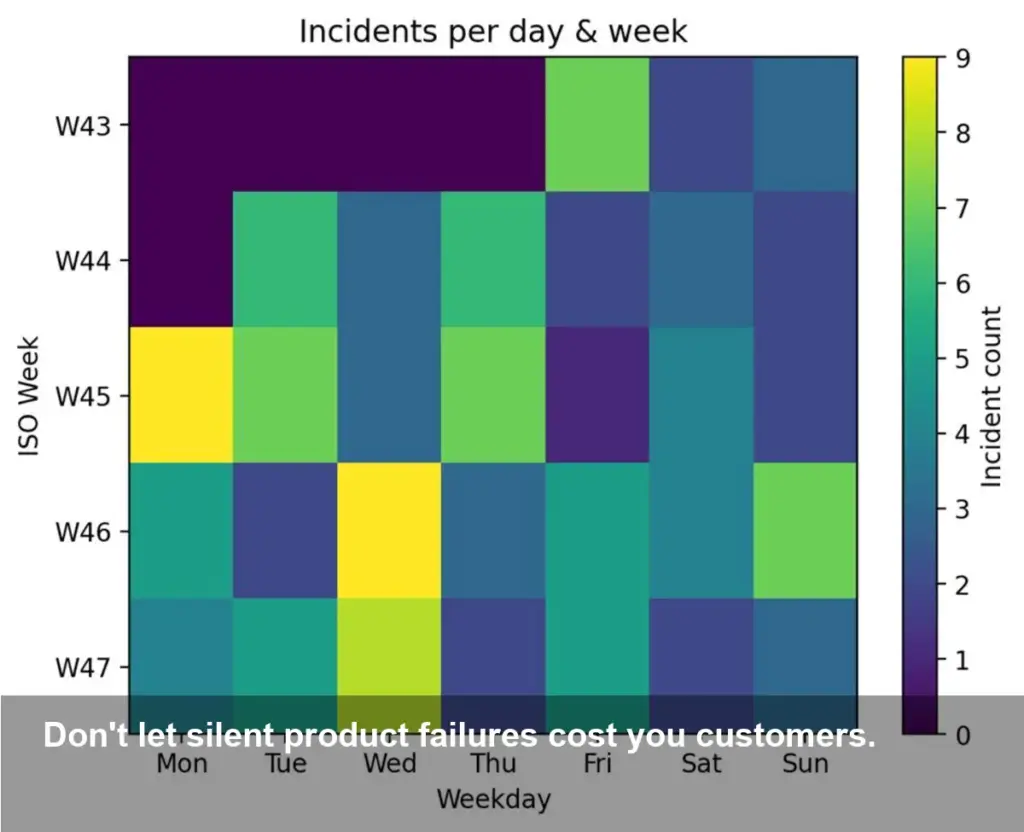- Game-Changing Metric: A new “Product Health Score” provides a single, unified view of a system’s stability, moving beyond siloed monitoring tools.
- Drastic Incident Reduction: Implementing this score, powered by n8n automation, led to a remarkable 35% decrease in critical product incidents.
- From Reactive to Proactive: The system shifts teams from a constant state of “firefighting” to proactively identifying and fixing issues before they escalate.
- The Power of Automation: n8n serves as the central nervous system, aggregating data from various sources to calculate the score and trigger intelligent alerts.
The Silent Killer: Alert Fatigue and Reactive Firefighting
In today’s complex digital landscape, technical teams are often drowning in a sea of alerts from countless monitoring tools. This constant noise leads to “alert fatigue,” where critical warnings get lost in the shuffle, and teams are stuck in a reactive loop of fixing problems rather than preventing them. This endless cycle of firefighting not only burns out talented engineers but also directly impacts user experience and the company’s bottom line. When your monitoring is fragmented, you never see the full picture—until it’s too late.
Introducing the Product Health Score: A Unified Command Center
What if you could consolidate all your disparate monitoring signals into one single, meaningful metric? This is the concept behind the Product Health Score. It’s a calculated score that provides an immediate, at-a-glance understanding of a product’s stability and performance. By assigning weights to different metrics—like error rates, latency, infrastructure health, and application performance—the score synthesizes complex data into a simple, actionable number.
This approach transforms ambiguity into clarity. Instead of debating the severity of a dozen different alerts, teams can point to a declining Health Score and know it’s time to act, allowing for data-driven decisions and proactive intervention.
n8n Automation: The Engine Behind the Score
A score is useless without a reliable way to calculate and act on it. This is where n8n automation becomes the critical component. In a groundbreaking case study, a team successfully reduced their critical incidents by 35% by building a workflow in n8n.
How It Was Done:
The n8n workflow was designed to:
- Aggregate Data: Automatically pull metrics from various sources like Prometheus, Grafana, Sentry, and other logging platforms.
- Calculate the Score: Run the aggregated data through a predefined formula to compute the real-time Product Health Score.
- Trigger Intelligent Alerts: When the score dropped below a certain threshold, n8n would send a detailed, contextualized alert to the appropriate team via Slack or other communication tools. This eliminated the noise of low-impact alerts.
- Visualize Trends: The workflow also pushed the score data to a dashboard, allowing the team to visualize trends over time and identify recurring patterns of instability.
The Staggering Results: A 35% Reduction in Chaos
The implementation of the n8n-powered Product Health Score marked a turning point. By focusing on a single, unified metric, the team could finally identify the root causes of instability and address them proactively. The 35% reduction in critical incidents wasn’t just a number; it represented more stable services, happier customers, and a development team that could finally shift its focus from firefighting to innovation.
Why You Can’t Afford to Ignore This
This success story is proof that the old way of managing system health is broken. Relying on a fragmented collection of monitoring tools is no longer a viable strategy. By unifying monitoring through a Health Score and leveraging powerful automation tools like n8n, you can create a more resilient, predictable, and innovative product environment. The question is, can you afford not to?
Image Referance: https://towardsdatascience.com/the-product-health-score-how-i-reduced-critical-incidents-by-35-with-unified-monitoring-and-n8n-automation/

